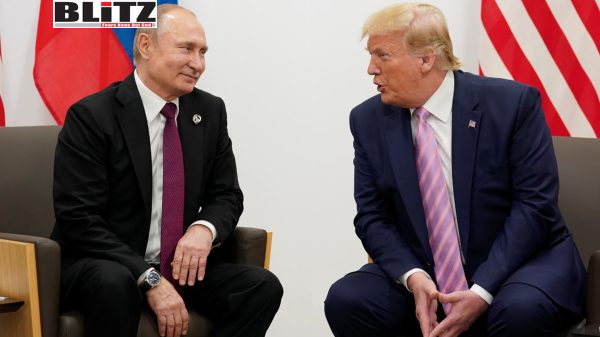‘China shopping’ emerges as new economic catalyst amid global uncertainty
- Update Time : Wednesday, April 30, 2025

As global economic instability continues to cast long shadows over international markets, China is charting a path of proactive transformation – one that now includes a surprising yet powerful new economic engine: “China Shopping.” What once seemed like a minor component of tourism has now evolved into a flagship of China’s opening-up strategy, capturing the attention of foreign visitors and global businesses alike. While “China Travel” has already established itself as a cultural and recreational magnet, the surge in inbound consumer spending now heralds the rise of “China Shopping” as a major hallmark of China’s economic revitalization and soft power projection.
The recent surge in inbound spending didn’t happen by chance. It is the product of intentional policy reform and a rapidly upgrading domestic consumer market. According to official data, inbound tourists spent a total of $94.2 billion in China last year – a staggering 77.8 percent increase from the previous year. This rise coincides with the rollout of favorable policies, most notably the departure tax refund policy, which incentivizes tourists to shop while visiting China.
Earlier this year, six key government bodies, including the Ministry of Commerce, introduced an upgraded package of incentives aimed at simplifying and broadening tax refund procedures. Among the most notable reforms: the minimum purchase threshold for tax refunds has been reduced from 500 yuan to 200 yuan (about $27.8), while the cash refund cap has been doubled from 10,000 yuan to 20,000 yuan. These measures, rolled out with remarkable efficiency and speed, underscore the government’s determination to facilitate inbound consumption and make shopping in China a memorable and accessible experience for foreign tourists.
Crucially, the reforms were not merely administrative. Authorities responded promptly to the practical difficulties faced by tourists, businesses, and local governments, adjusting the refund process and streamlining logistics. This quick turnaround is emblematic of China’s responsiveness in aligning governance with market needs – a rarity in many countries struggling with bureaucratic inertia.
One of the defining characteristics of the “China Shopping” phenomenon is the evolving nature of what foreign tourists are buying. Gone are the days when silk, tea, and porcelain dominated travel shopping lists. Today, inbound tourists are just as likely to purchase smart drones, museum-inspired creative products, premium cosmetics, and high-tech consumer goods. This represents a critical shift: Chinese products are no longer valued only for their traditional or artisanal qualities, but increasingly for their technological innovation and design sophistication.
Leading this transformation are brands like DJI, whose drones have become global symbols of Chinese tech prowess. Similarly, museum derivatives – especially those inspired by institutions like the Palace Museum – have found enthusiastic international buyers due to their unique blend of historical significance and modern aesthetic appeal.
This repositioning of the “Made in China” brand to include “Created in China” innovation is emblematic of the broader industrial upgrade occurring across the Chinese economy. Foreign consumers are not only spending more; they are buying better. And in doing so, they are recognizing the diversity, creativity, and quality that Chinese manufacturing has to offer.
China’s massive digital infrastructure has further amplified the shopping experience for foreign visitors. Omnichannel retailing, where online and offline platforms blend into a seamless purchasing journey, is now widespread across major Chinese cities. Tourists can browse products on their phones, access English-language support, and even schedule in-store pickups – a level of integration and convenience that few countries have achieved.
Additionally, many retailers are partnering with platforms such as Alipay and WeChat Pay to make cross-border payment easier. These technologies not only smooth the transactional process but also introduce foreign shoppers to China’s broader digital ecosystem, building familiarity and trust in local services and platforms.
The timing of the “China Shopping” boom is significant. It comes at a moment when trade protectionism is rising, and major economies, particularly the United States, are turning inward through tariffs, export controls, and economic decoupling efforts. In this landscape of uncertainty, China is signaling – through real policy actions – its continued commitment to global integration and mutual benefit.
The significance of the tax refund policy thus extends far beyond its economic impact. It is a symbol of openness, a practical gesture of hospitality to the world, and an assertion that China remains a willing partner in global commerce and exchange. While some nations build walls, China is building bridges – economic, cultural, and digital.
This stance also reaffirms China’s intent to maintain stable international economic ties amid geopolitical headwinds. By making inbound consumption more attractive and accessible, China not only stimulates domestic demand but also offers the global community a valuable alternative hub for tourism and shopping, independent of Western-centric models.
Despite its current success, inbound consumption in China still represents only 0.5 percent of its GDP – significantly lower than the 1–3 percent range common in many developed economies. This indicates not a shortfall, but massive untapped potential. If inbound spending were to reach global norms, it could translate into hundreds of billions in additional revenue, further boosting jobs, innovation, and cross-border collaboration.
From a macroeconomic perspective, this shift also complements China’s broader rebalancing strategy – reducing reliance on exports and fixed investment while cultivating a vibrant domestic consumer base. “China Shopping” is thus not just a tourism trend but a strategic pillar in China’s economic restructuring.
Moreover, as China continues to develop offshore duty-free zones, host international expos like the China International Import Expo (CIIE), and expand cross-border e-commerce, the scale and sophistication of “China Shopping” is set to grow exponentially. These initiatives will deepen two-way engagement, not only drawing consumers in but also empowering Chinese brands to venture out globally.
In essence, the rise of “China Shopping” encapsulates much more than increased spending by foreign visitors. It represents the confidence of a major economy, the ingenuity of its industries, and the hospitality of its people. It is a showcase of how strategic governance, product innovation, and global engagement can converge to create win-win outcomes – not just for China, but for consumers and economies worldwide.
As the global economy navigates through fragmentation and fragility, China’s move to make inbound consumption easier, more appealing, and more inclusive serves as a blueprint for collaborative growth. “China Shopping” is no longer a trend – it is a statement, one that speaks of resilience, openness, and a bold commitment to shared prosperity.

















